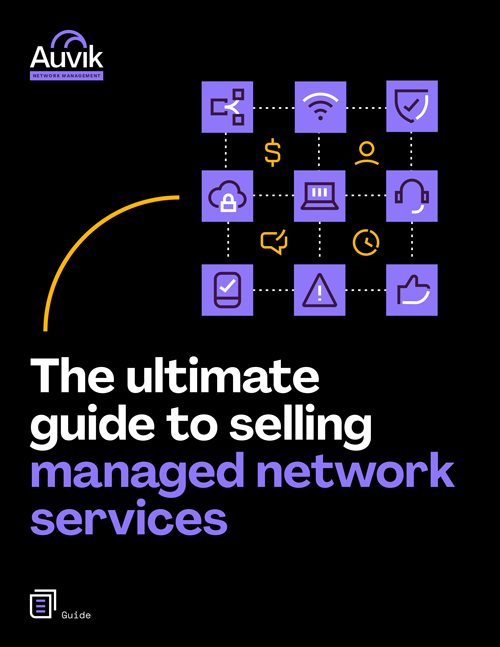What is ITIL?
Created in the 1980s by the British government’s Central Computer and Telecommunications Agency (CCTA), ITIL was initially developed for use in the public sector to create a unified approach used by all government departments. Seeing the increased reliance on IT, the government realized that a lack of standardization was allowing costly errors.
While ITIL was developed for use in the public sector, it has also been adopted by many private companies. In fact, it’s now used by organizations all over the world. One of the reasons for its popularity is that ITIL can be applied to any type of organization, regardless of size or industry. It is also a flexible framework that can be customized to fit the needs of any organization.
ITIL has also proven to be an effective way to improve the quality and efficiency of IT service management because it provides a structured approach that can be followed by all members of the organization.
What does the IT infrastructure library include?
The most recent update was in 2019, with the current version maintaining its mission of automating procedures, enhancing service management, and “ensuring the full integration of the IT department into the business.” It also updated the framework so that it would better apply to newer technology, software, and tools.
ITIL V4 is built around nine guiding principles:
- Focus on Value
- Design for experience
- Start where you are
- Work holistically
- Progress iteratively
- Observe directly
- Be transparent
- Collaborate
- Keep it simple
This most recent version of ITIL includes two additional critical components: The Four Dimensions Model, and the Service Value System (SVS). The Four Dimensions Model enables a business to take a holistic approach to service management by looking at interactions in four general areas:
- Organizations and people
- Information and tech
- Partners and suppliers
- Value streams and processes
The Service Value System (SVS) are guidelines designed to help businesses create value for their customers. It includes all the essential how-to components of service management, including:
- Guiding principles
- Governance
- Service value chain
- Continual improvement
- Best practices
Currently, ITIL v4 includes 34 management practices designed to help organizations complete tasks and achieve objectives. ITIL v4 offers guidance for each practice that includes vital terms and concepts, including basic networking terms, essential activities, and success factors in three key areas:
- General management practices, such as strategy management, architecture management, risk management, knowledge management, and project management.
- Service management practices, including business analysis, service design, monitoring and event management, release management, and IT asset management.
- Technical management practices that cover deployment management, infrastructure, and platform management, and software development and management.
In short, ITIL is a genuinely comprehensive framework covering every aspect of service management.
How has ITIL has been updated over time?
Initially, ITIL consisted of 30 books on various processes (note: that’s a lot of processes). Over its four iterations, ITIL has been regularly updated and revised to keep up with changes in technology and best practices:
- V1 was launched in 1989 to standardize IT service management. It helped organizations streamline services and put the spotlight on the concept of best practices.
- V2 (2006) provided administrators with a more effectively structured approach to delivering and supporting services. It also included processes organizations could implement.
- V3 (2007) expanded on its previous iteration by including guidelines in five different categories, namely service strategy, service design, service transition, service operation, and continual service improvement.
- V4 (2019) was designed to be more flexible than previous versions and to better fit with modern methodologies, such as DevOps, containers, microservices, the cloud, and automation.
Is ITIL still valuable?
We think so. When implemented correctly, ITIL can also help businesses avoid or resolve problems before they cause significant disruptions. As an ITIL certified professional, you can work for an organization or operate as a trainer or consultant.
What You Need to Know About ITIL Certification
ITIL certification is a set of qualifications that attest to an individual’s understanding of the ITIL framework and their ability to apply it in a real-world setting. There are five levels of certification:
- Foundation: Entry-level certification covering the basics of ITIL.
- Practitioner: A certification that covers how to apply ITIL in a real-world setting.
- Intermediate: Includes optional modules on various areas of the framework, such as change management, configuration management, and more.
- Expert: Usually obtained after completing the aforementioned certifications, this level covers the whole ITIL framework in detail. Expert accreditation is required before one can achieve master-level certification.
- Master: With this certificate, you have proof that you can apply ITIL principles, methodologies, and techniques to achieve desired business outcomes. To become an ITIL master, you first need to be expert-level certified and have also worked in IT service management for a minimum of five years.
In practice
Now that you have a better understanding of what ITIL is, let’s take a quick look at how you can put its principles into practice.
Note: you need to start by considering whether or not ITIL is the right training process to provide the best benefits to your company. Every business is different, which means that the processes and practices that work for one organization might not work for another. The key is to understand the ITIL framework and how it can be tailored to fit your organization’s specific needs.
Consider the following assessment/progression approach:
- Analyze opportunities, and pain points, to develop a baseline for determining whether progress is being achieved vs what’s currently being delivered
- Research an ITIL introductory (Foundation) training and certification program (there are a lot out there!).
- Assess the maturity of your current processes
- Set targets
- Establish what ITIL processes and practices will help you achieve your goals
- Assign process owners
- Share successes with stakeholders
- Review and improve constantly
Keep in mind that the breadth of ITIL means it has a wide range of applications. It can be used for anything from laying out a framework of how to communicate technical information to a non-technical audience, to streamlining company-wide processes, to explaining network documentation and developing associated processes.
Sutter Health is a US integrated healthcare delivery network that serves over three million patients. The organization has almost 52,000 employees, of which 2,000 make up its Information Services team handling IT and IT service management. After working with experts, 90-day improvement cycles were introduced focused on new processes, tech changes, culture improvements, and more. Some of the outcomes include greatly reduced hold times, increased customer satisfaction, and a reduced cost of ownership of nearly $3.3 million in three years.
How important is ITIL certification in 2022?
While the framework is in no danger of being replaced anytime soon, other service management frameworks have gained popularity in recent years. DevOps frameworks, for example, have become more popular due to their focus on collaboration between developers and IT ops.
ITIL also has some drawbacks. Considering that many businesses are feeling the pressure to facilitate collaboration among all departments, ITIL’s lack of focus on other areas outside of IT operations can be seen as a hindrance, too niche for a modern workplace.
Many employers are also placing a greater emphasis on platform-oriented skills than ITIL concepts, meaning that an AWS or Azure certification might be more valuable. On a practical level, an IT professional who can manage a complicated cloud platform is likely to be more valuable than one who simply understands ITIL principles.
The future
While it might not be as essential as it was a decade ago, ITIL certification still remains a valuable asset for any IT professional. Many businesses still rely on ITIL, as the thousands of job ads mentioning it can attest to. After all, it still provides many benefits, such as improving service quality and reliability, increasing customer satisfaction, improving staff productivity and resource usage, and allowing for greater adaptability and better business risk management.
In short, ITIL is still a framework worth considering for businesses of all sizes. And, with the right certification, you can show employers that you have the skills and knowledge to help them implement ITIL successfully.
Your Guide to Selling Managed Network Services
Get templates for network assessment reports, presentations, pricing & more—designed just for MSPs.






